Deliverables in the design process
The purpose of this blog is to offer insights into the key deliverables of our ISO9001 certified design process. Not all mentioned deliverables are necessary for every design process; their necessity depends on the product type and the status of development when ManGo Product Design is approached. Certain projects may require fewer deliverables, while others may need additional, specific ones tailored to that particular project. As our example, we highlight the GOAL3 medical device project in this blog, which our team managed from inception to completion and received an iF award for excellence in product design upon its completion.
Moodboard
Mood boards serve as the vibrant blueprint for our industrial design process, offering a visual roadmap that ignites creativity and ensures alignment between our clients and our design team. These collages amalgamate colors, textures, materials and geometries, providing a holistic representation of the desired aesthetic, mood and functionality of your product. At Mango, our process begins with research and client collaboration to understand brand identity, target audience and market trends. From there, our designers curate mood boards that encapsulate these insights. These are presented to our clients for input and approval. For clients with established brand identities, we can follow their brand guidelines.
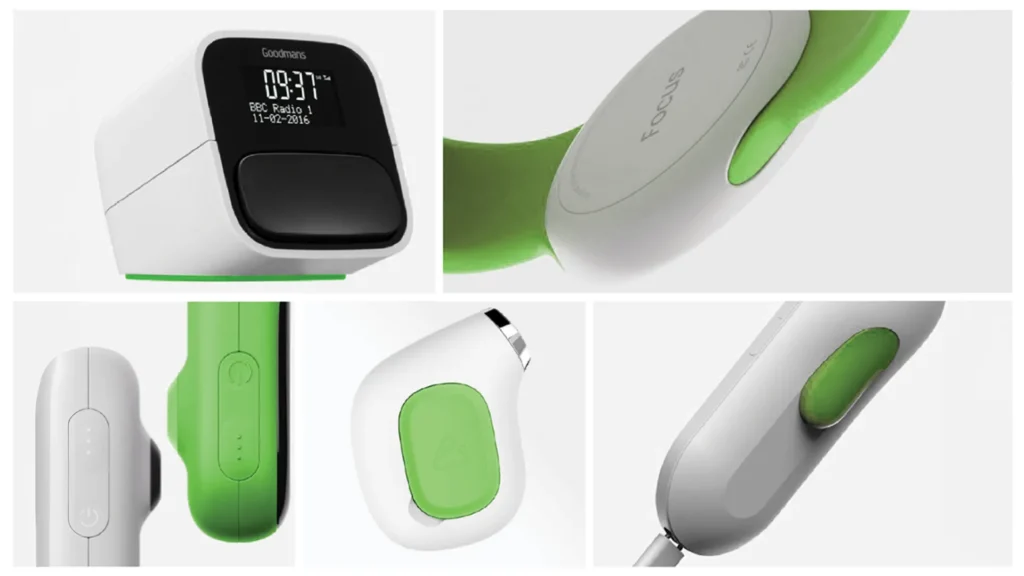
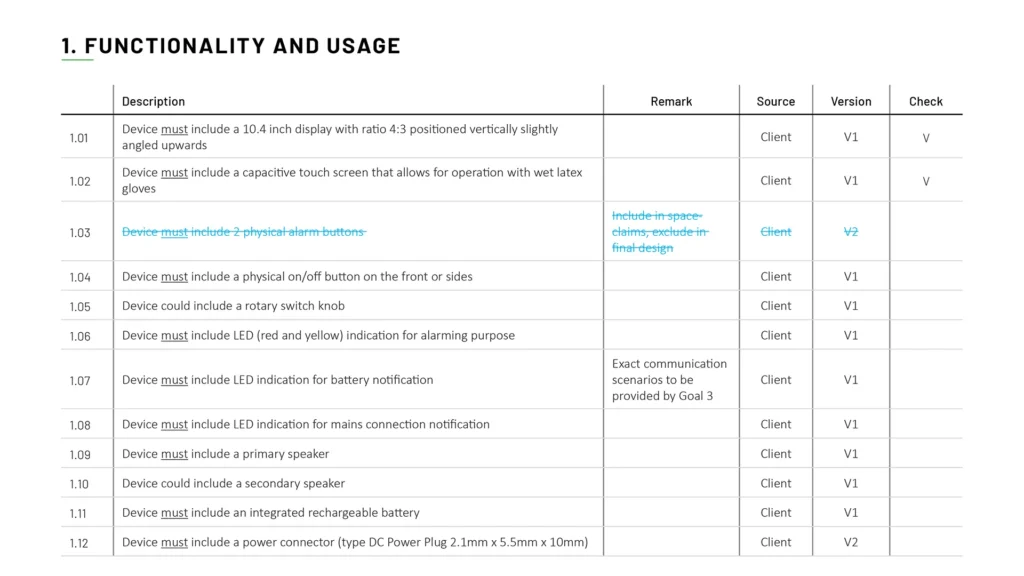
Program Of Demands (POD)
A robust POD is the bedrock of successful product design, providing a clear roadmap that aligns creative vision with technical objectives. At ManGo, we capture client needs, product functions, and aesthetic preferences meticulously for seamless clarity from concept to completion. Integrating ISO, NEN, and ASTM standards into the POD ensures global quality benchmarks and safety protocols. This guarantees product safety, streamlines certification, and ensures regulatory compliance with confidence and precision. The POD is updated throughout our design process and requires client sign-off at each phase. Once finalized, it becomes a crucial design history document in the technical file for certification.
Morphological map
A morphological map is a structured tool we use in developments with technical challenges. It involves breaking down a system or problem into its individual functions and then systematically exploring and combining various options for potential solutions. At ManGo, our extensive database boasts over 6.000 technical solutions which is enriched by our diverse industry experience. During brainstorming sessions, our team ideas from various sectors intermingle, fostering a rich exchange of concepts. The best ideas are cross-referenced and evaluated, presented in a clear overview to pinpoint the most promising combinations. This process enables our team to explore diverse possibilities, nurture creative thinking and deliver innovative solutions tailored to meet your project’s objectives and requirements.
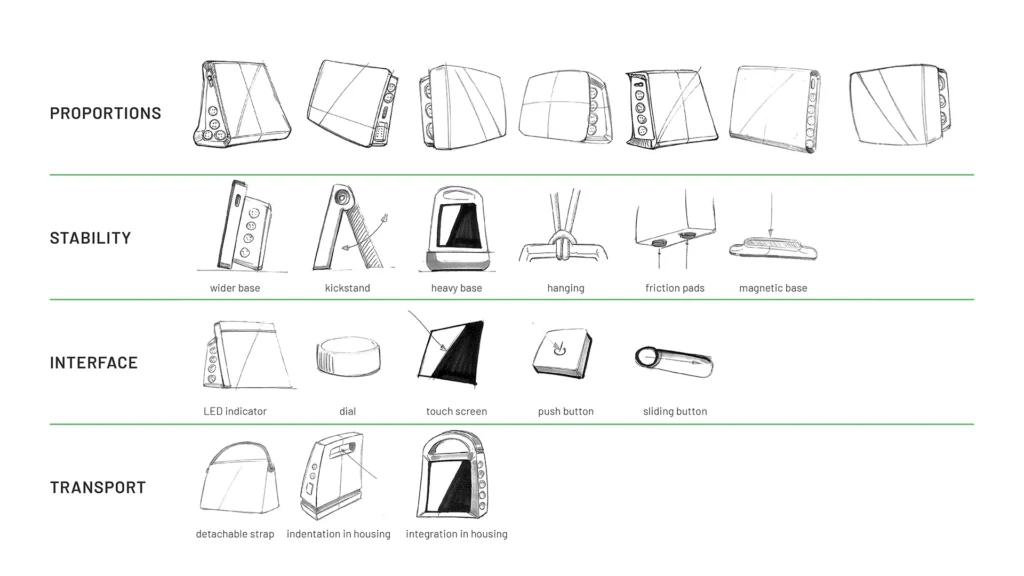
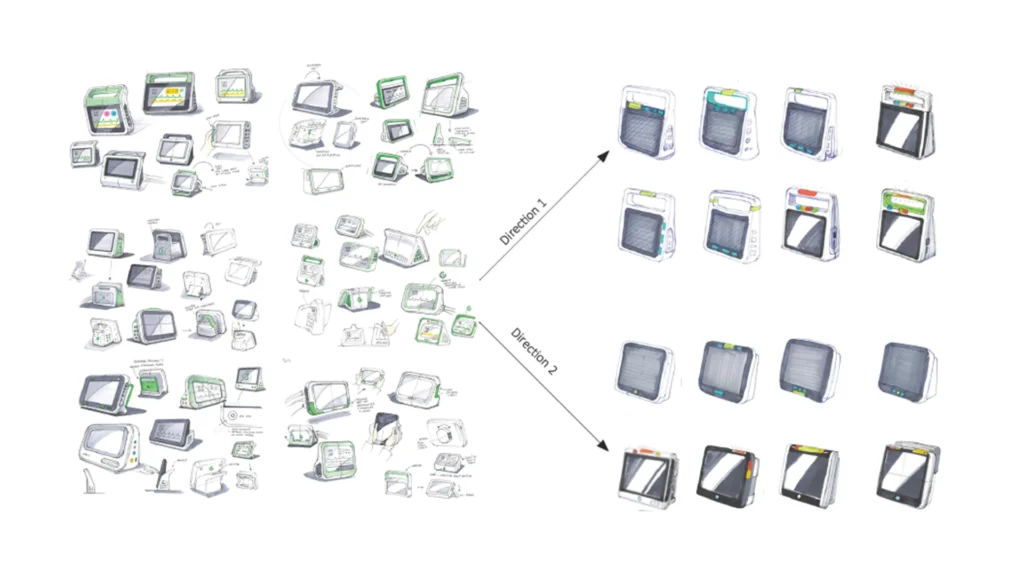
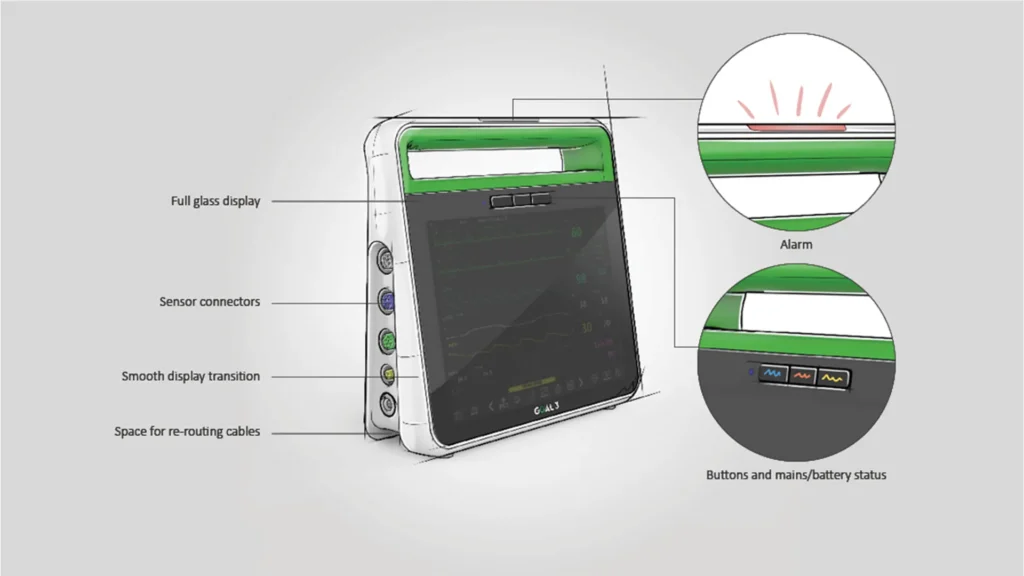
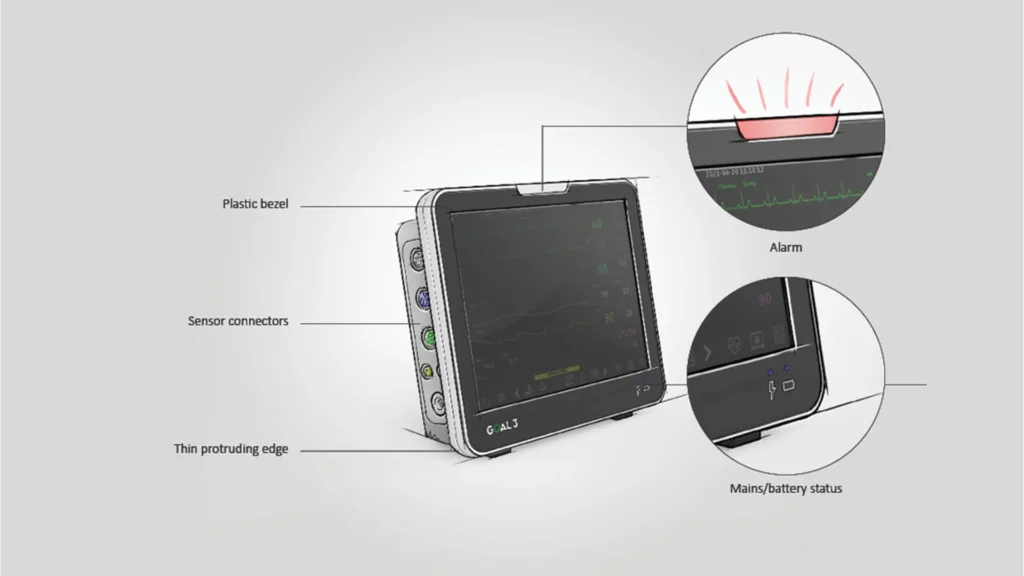
Sketch concept presentation
This initial visual product design presentation is a crucial milestone in our design process, flowing from the Program of Demands (POD) and mood board deliverables. Drawing from our brainstorm sessions, where often hundreds of ideas are explored, our team begins digitally sketching on average three distinct design directions. These sketches embody our collective creativity and understanding of your project’s requirements. And in a collaborative discussion with the client, we present these concepts, allowing for feedback and selection of preferred elements or a blend of ideas. This iterative process guarantees that each step of the design direction remains in line with our client’s vision and goals, paving the way for the subsequent development of 3D CAD concepts.
Low-fidelity prototype
Often crafted by our team either during the sketch or 3D concept phase, these prototypes serve as basic, simplified representations of the product. They are created to explore and validate design concepts in the early stages of development. These prototypes are often made from simple and inexpensive materials such as cardboard, foam or clay. By quickly and affordably creating physical representations of design ideas, our designers and engineers can gather valuable input, identify potential issues and iterate on the design directions to improve their overall quality and usability.
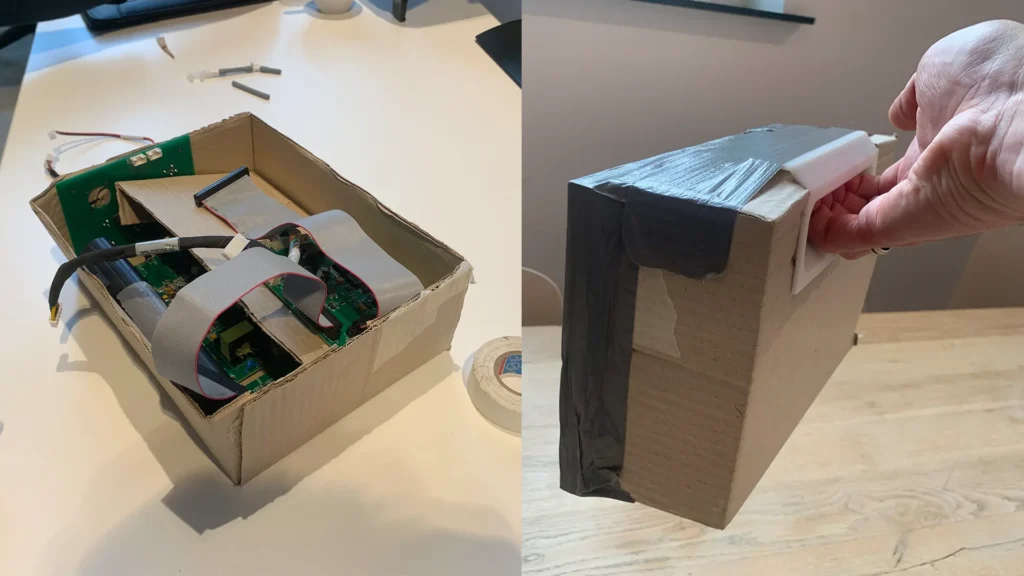
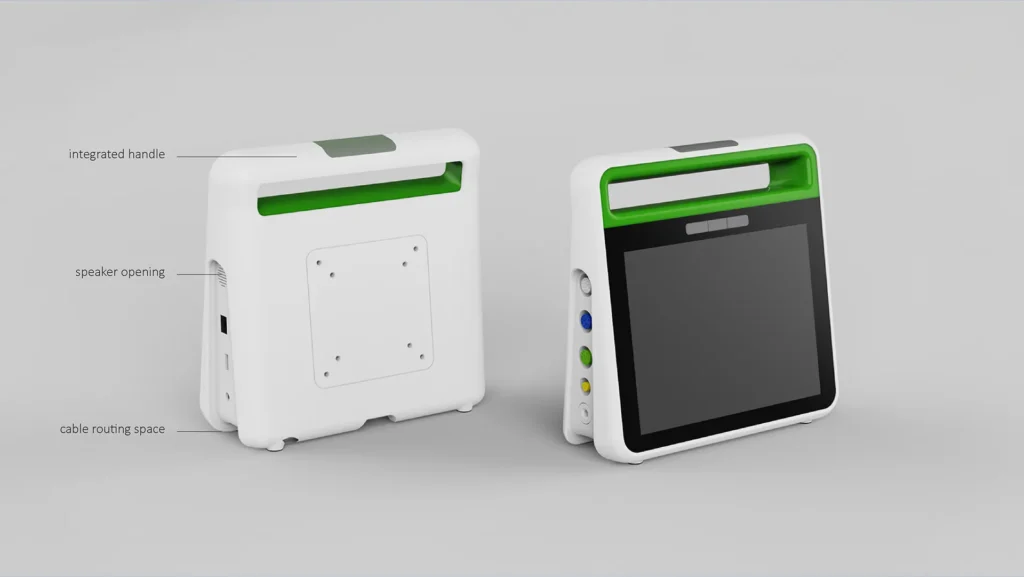
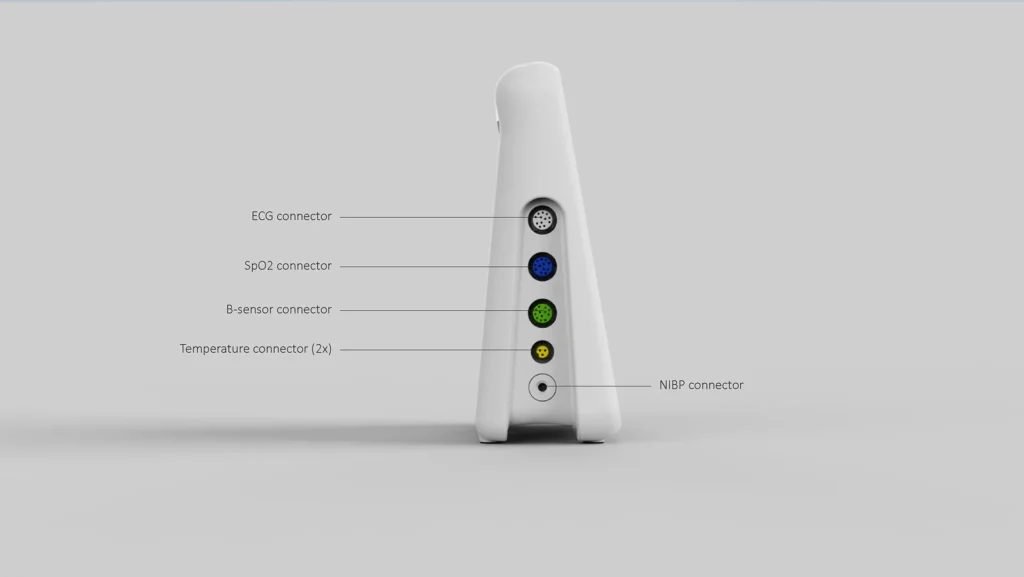
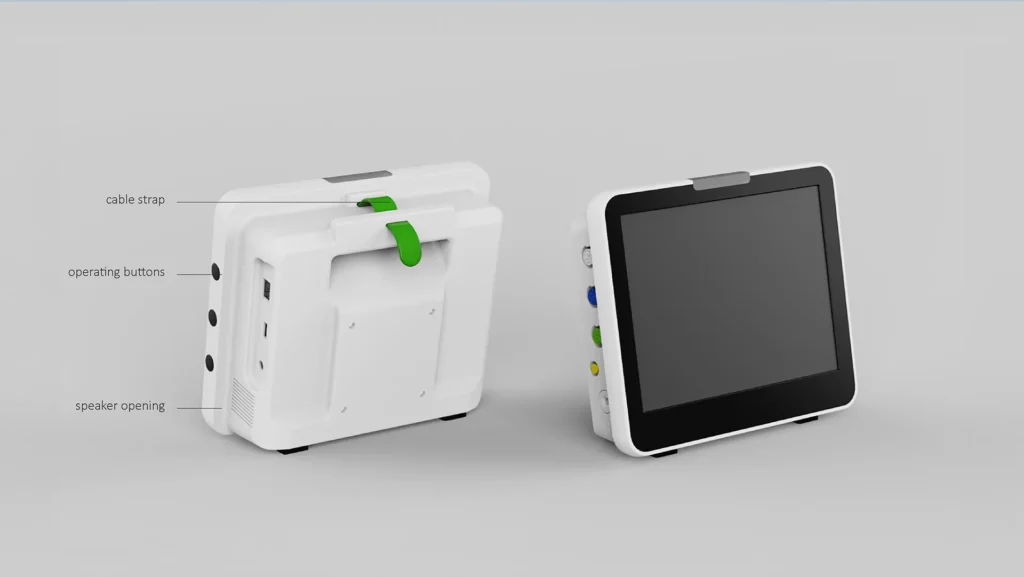
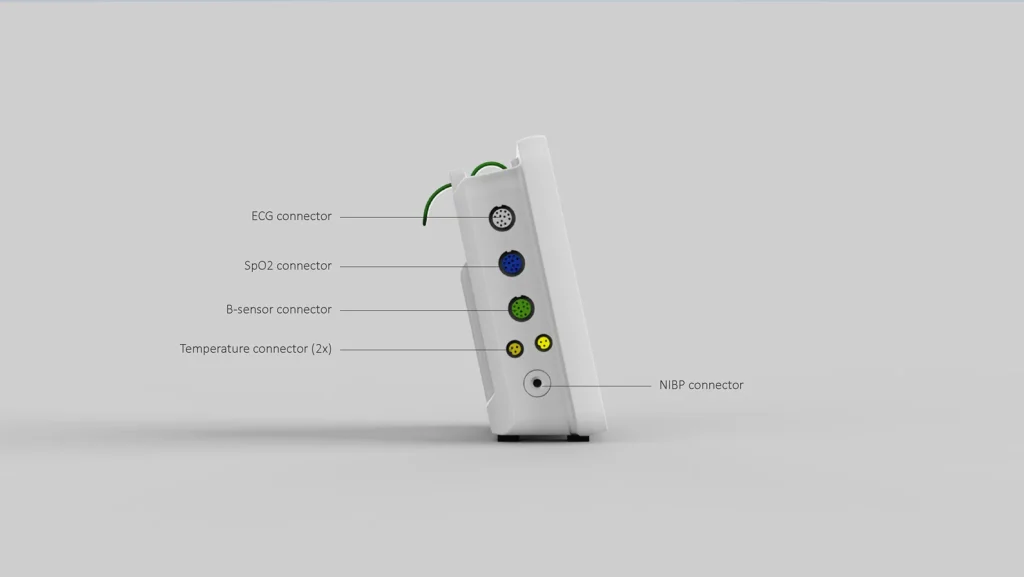
3D Concept presentation
Our second product design presentation marks a significant advancement, as we transition from sketches to 3D CAD models. This step involves meticulously crafting a digital 3D model based on the design direction selected by the client during the sketch concept presentations. The 3D CAD models are rendered to provide a realistic representation of the envisioned product. This stage not only allows for a more tangible exploration of design possibilities but also facilitates a deeper understanding and refinement of the chosen direction, whilst still exploring options. The 3D concept outcomes are presented to the client for discussion, where the final refinements are identified and discussed collaboratively.
Final 3D concept presentation
The final 3D CAD concept presentation represents the culmination of the collaborative creative journey with our clients, where every input and insight are carefully integrated. Building upon earlier iterations and feedback, we meticulously add or finetune design details, ensuring that the final concept reflects the vision and objectives of our client. In this stage, we elevate the quality of renders even further to provide a vivid and photo realistic representation of the envisioned product.
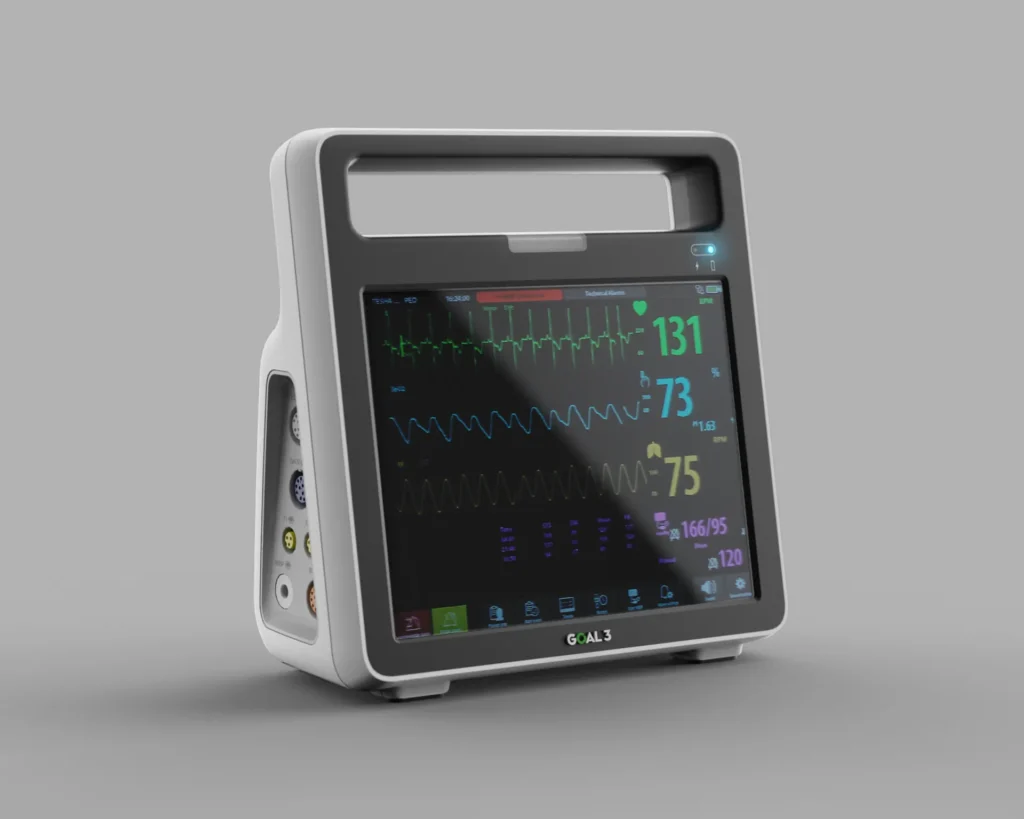
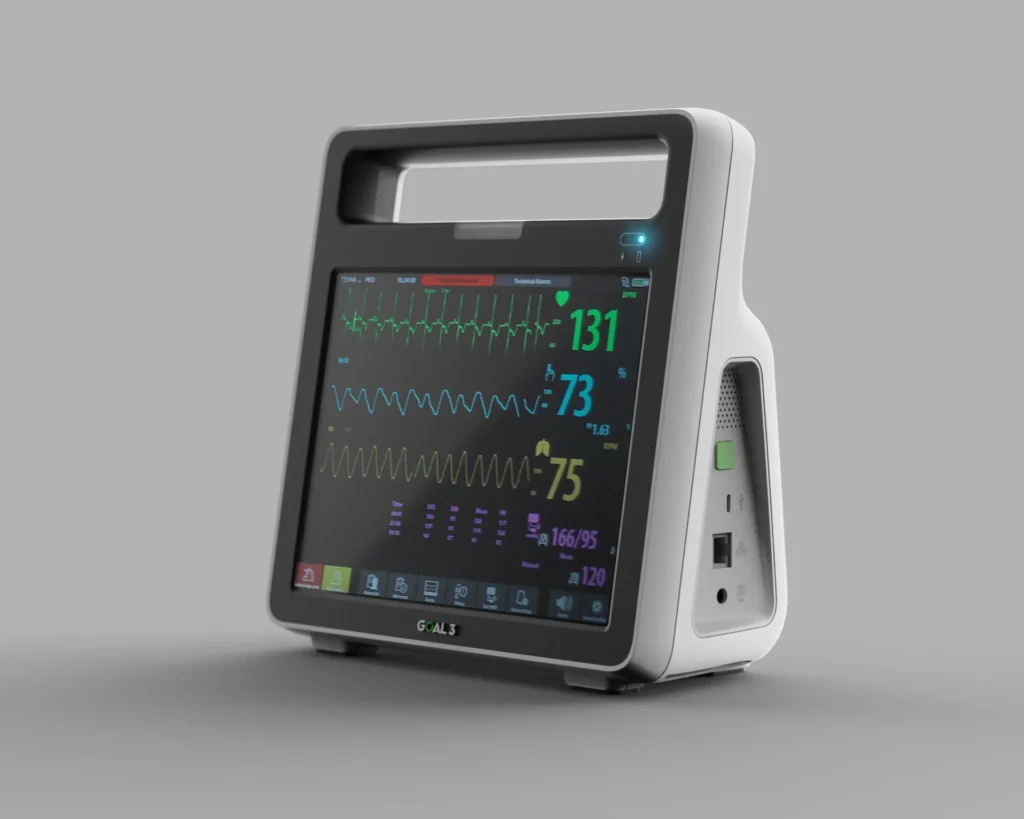
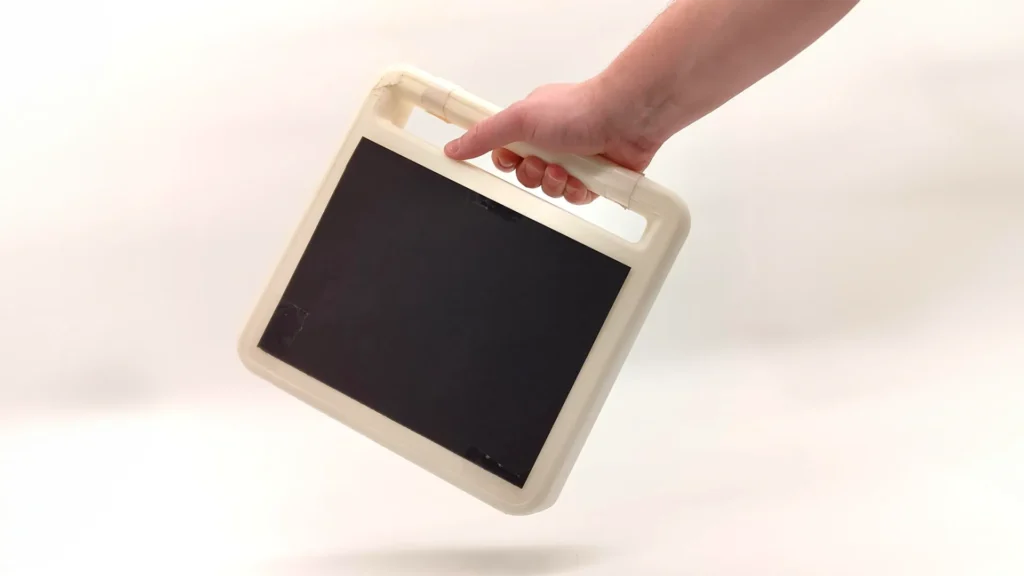
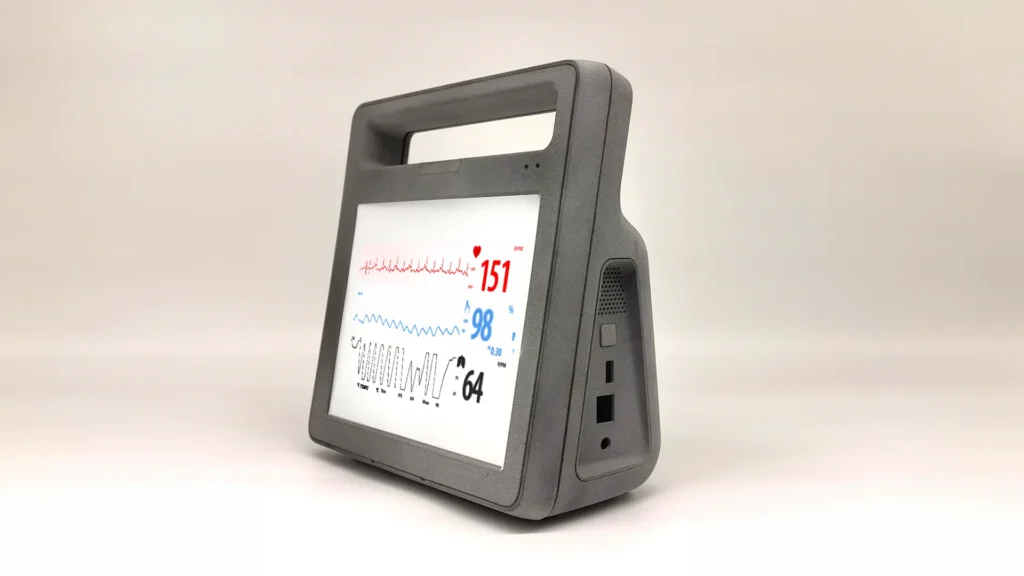
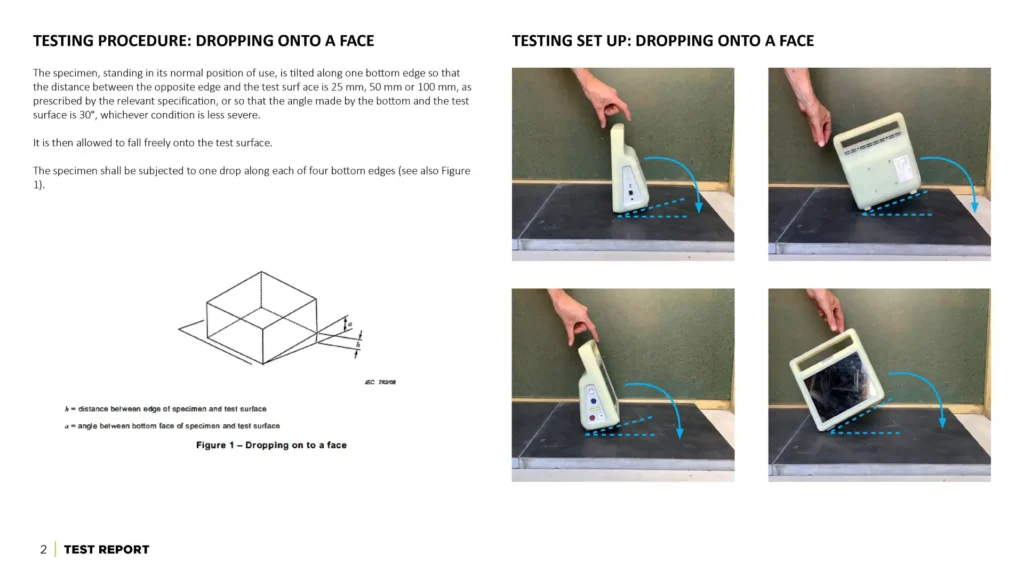
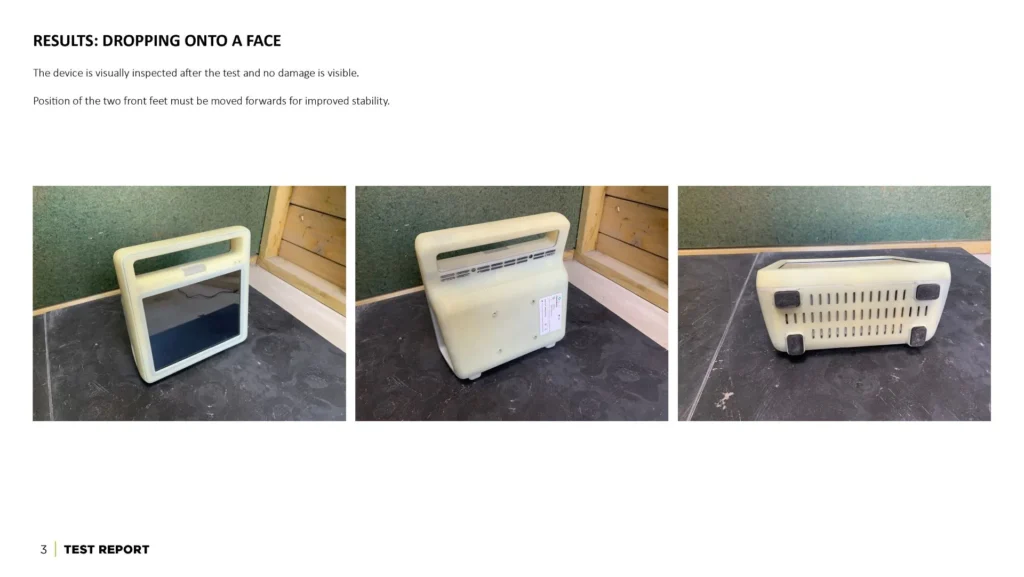
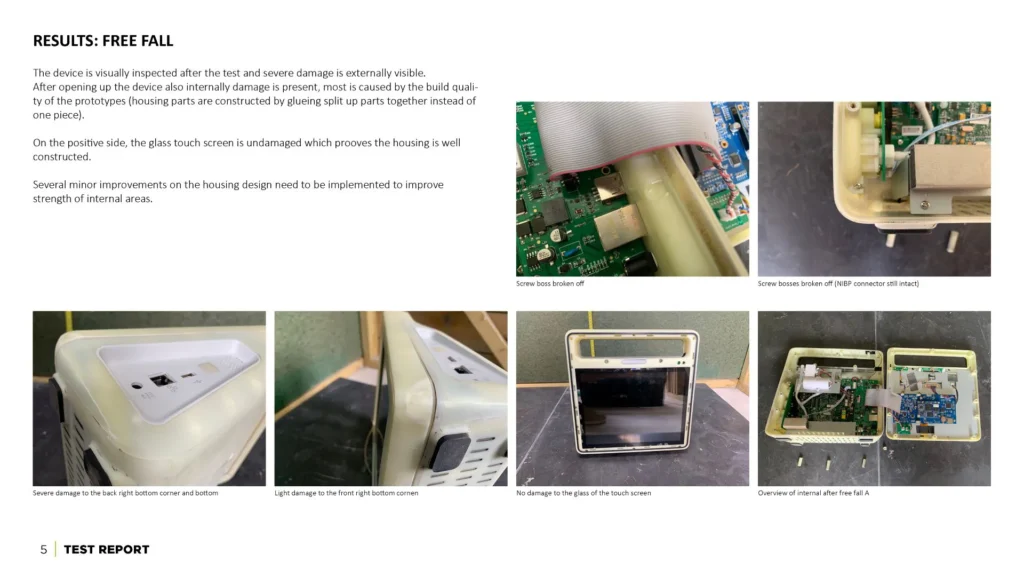
Prototypes and evaluation documents
Primarily beginning with basic visual physical models and progressing towards a functional prototype, which serves as a tangible representation closely mirroring the final product and capable of showcasing its intended functionality. In a project prototypes can serve all kinds of purposes:
- Integrating electronics, PCBA’s, sensors and actuators.
- User tests to gather feedback on usability, ergonomics, and preferences.
- Creation of marketing material.
- Showcases for company stakeholders, investors, tradeshows or launching customers.
- Lab tests to assess for example: heat stress, water ingress, performance under different conditions, ensuring compliance with regulations.
- Assess medical device effectiveness, safety and usability in clinical trials
Multiple prototype iterations are often necessary during the design process to conduct thorough testing. We document these tests and their outcome in detail, share and discuss the results with clients and incorporate identified improvements in the design.
Design For Manufacturing & Assembly (DFMA) 3D CAD
After successful prototype tests, we refine the design into the final DFMA 3D model, optimizing it for efficient production and addressing manufacturing complexities. With the DFMA model finalized, we or the client can engage with manufacturers for quotations on molds and manufacturing. Preferred manufacturing techniques are discussed and integrated into the POD as early as the first step of the development process and designs made accordingly. The selection of the most optimal techniques typically hinges on the client’s desired manufacturing price, production batch sizes and tooling budget. During DFMA, intricate manufacturing technique requirements are integrated into the 3D model. These details are time-consuming and not essential for prototyping; hence they are addressed later in the process.
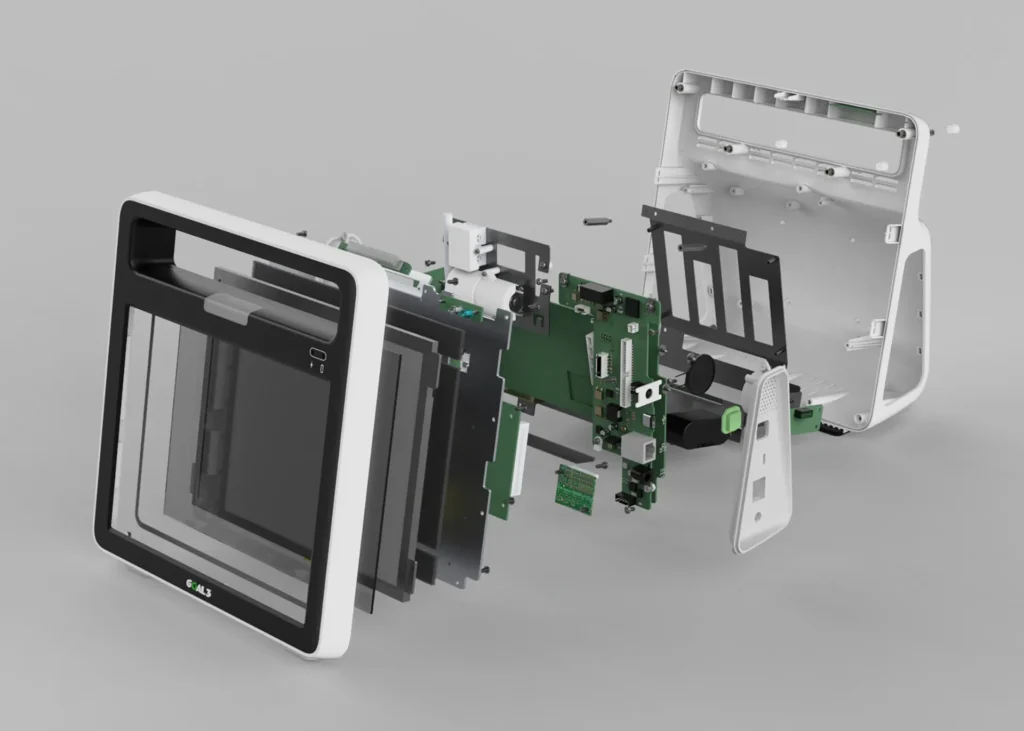
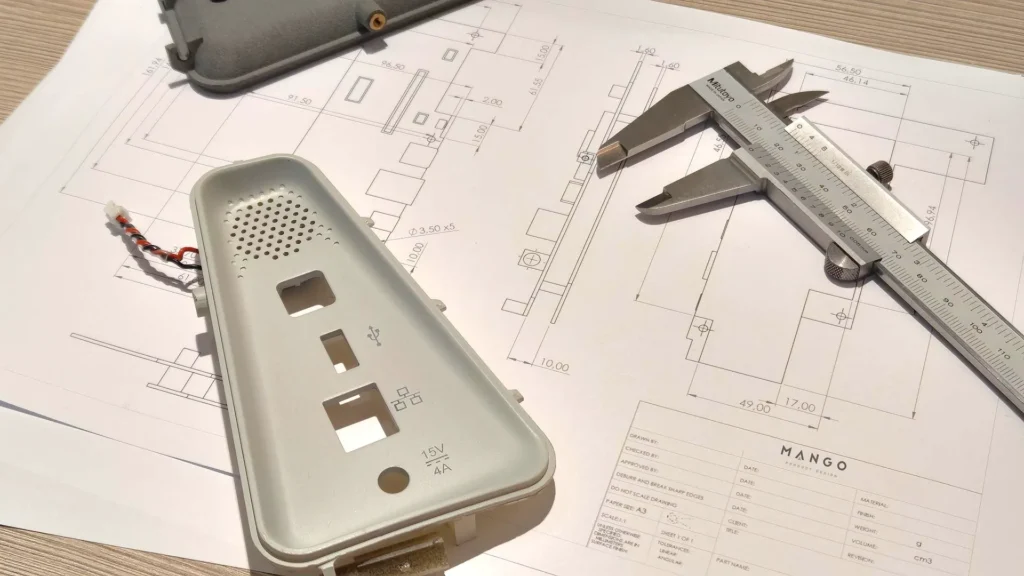
Technical drawings (2D CAD)
2D CAD drawings play a critical role in materializing client designs into tangible products. Derived from the detailed DFMA 3D CAD models of all custom components, these drawings specify sizes, tolerances and essential manufacturing details. Our team ensures precision by integrating stacked tolerances and CMF (Color, Material and Finish) details, simplifying the industrialization process and enabling smooth collaboration with manufacturers. These drawings serve as blueprints for transforming ideas into reality, guiding every step of the manufacturing journey with accuracy and efficiency.
Pre-production prototype
These prototypes closely resemble the final product, crafted using the best prototyping methods and utilizing materials identical or similar to those used in series production. They incorporate all Design for Manufacturing and Assembly (DFMA) details into the design. Serving as the ultimate test, they guarantee that, like the preceding functional prototype, the design maintains its appearance and fulfills all intended functions. This step is always wise to execute prior to committing to the investment in often costly manufacturing toolings (molds).
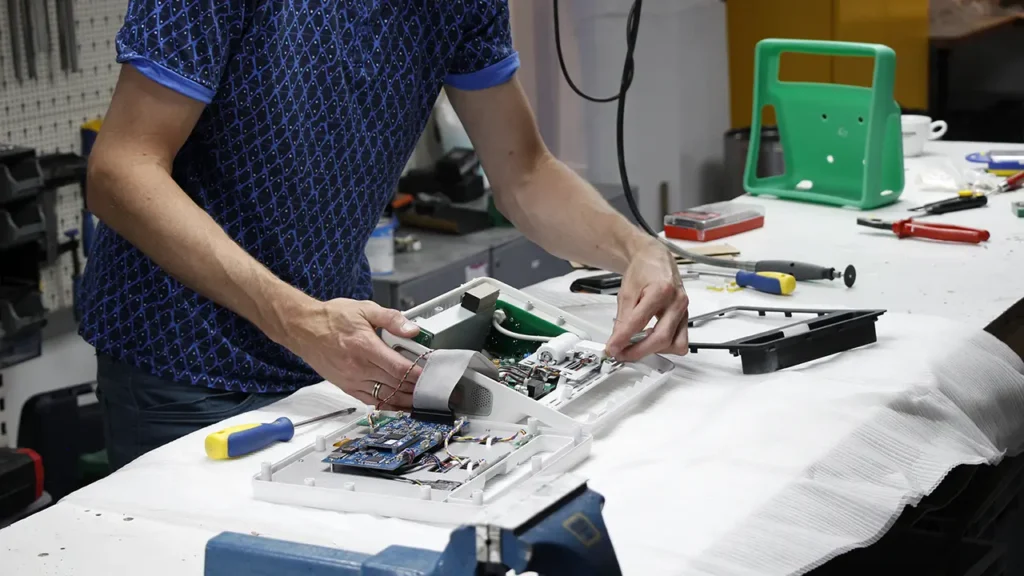
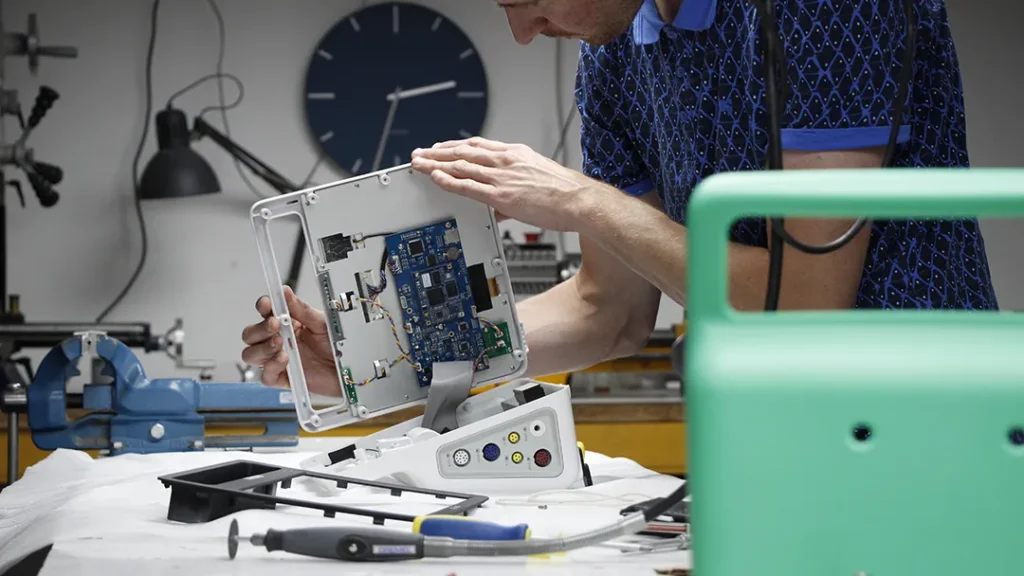
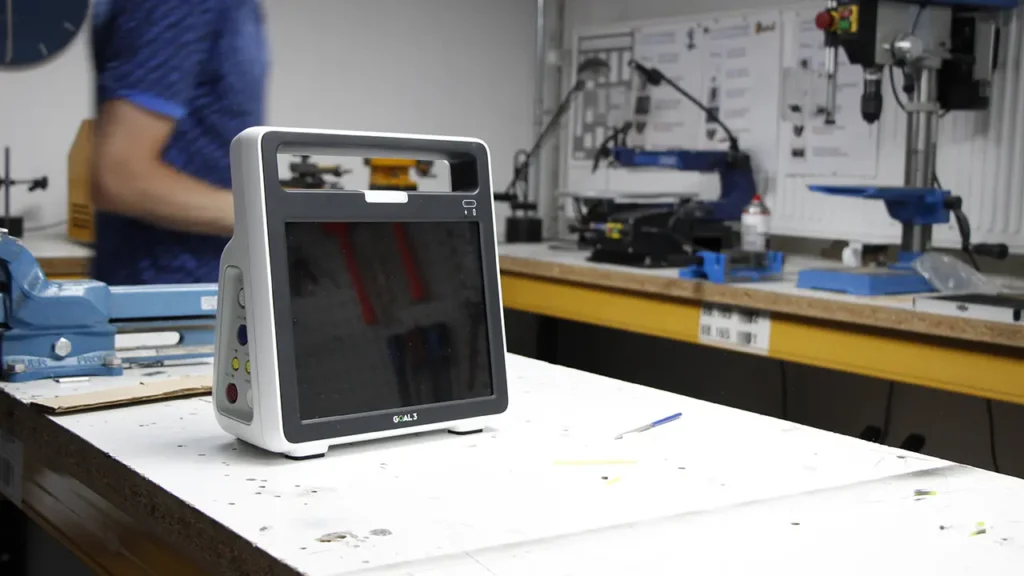
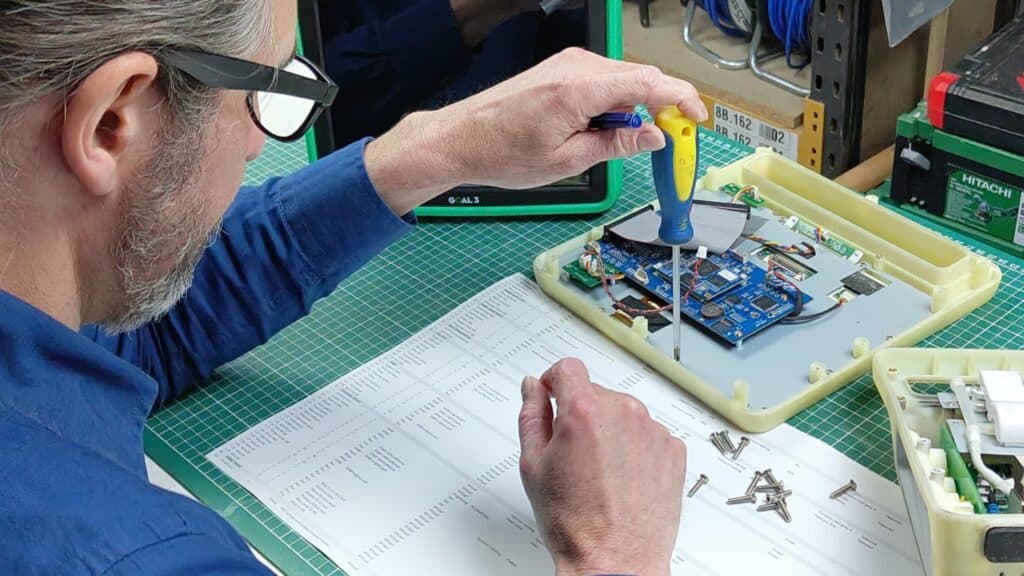
Bill Of Materials (BOM)
The BOM is a comprehensive list that itemizes all the components, parts, materials and sub-assemblies required to manufacture a product. It provides information about each component needed for production, including quantities, descriptions and costs. The primary purposes of a BOM:
- Streamlining material procurement by specifying quantities and lead times, ensuring timely acquisition and minimizing shortages.
- Aiding in cost estimation by breaking down component costs, enabling accurate budgeting and pricing strategies.
- Offering assembly teams, a detailed list of components and locations.
- Provide relevant details for quality control procedures.
Mould and production documentation
In this phase of the development process, ManGo assumes the role of guardian for your product design as it transitions to the selected manufacturer or tool/mould maker. Known as the industrialization phase, this stage involves the creation of various deliverables by these third parties, which we meticulously check and document. Key deliverables include 3D CAD designs and 2D CAD drawings of moulds, test samples from the process (e.g., First-Off Tool, Second-Off Tool) and the completed moulds themselves. Test assemblies are constructed and subjected to thorough testing, while quality control documentation is prepared for future production run inspections. With these procedures and documents in hand production runs can be guided and controlled.
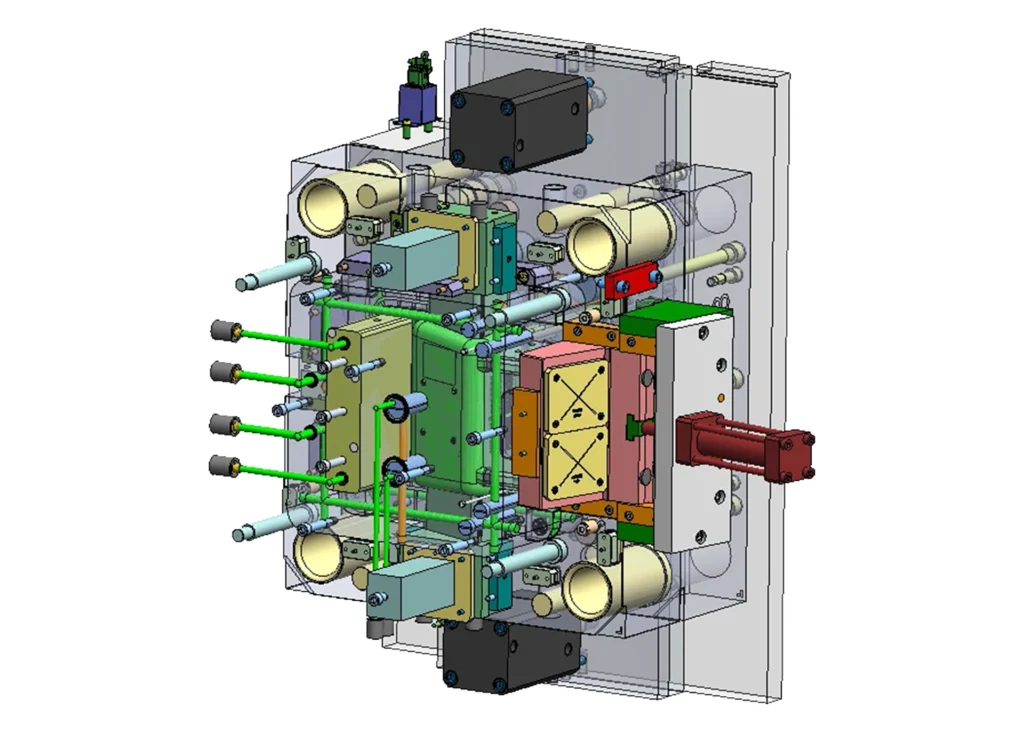
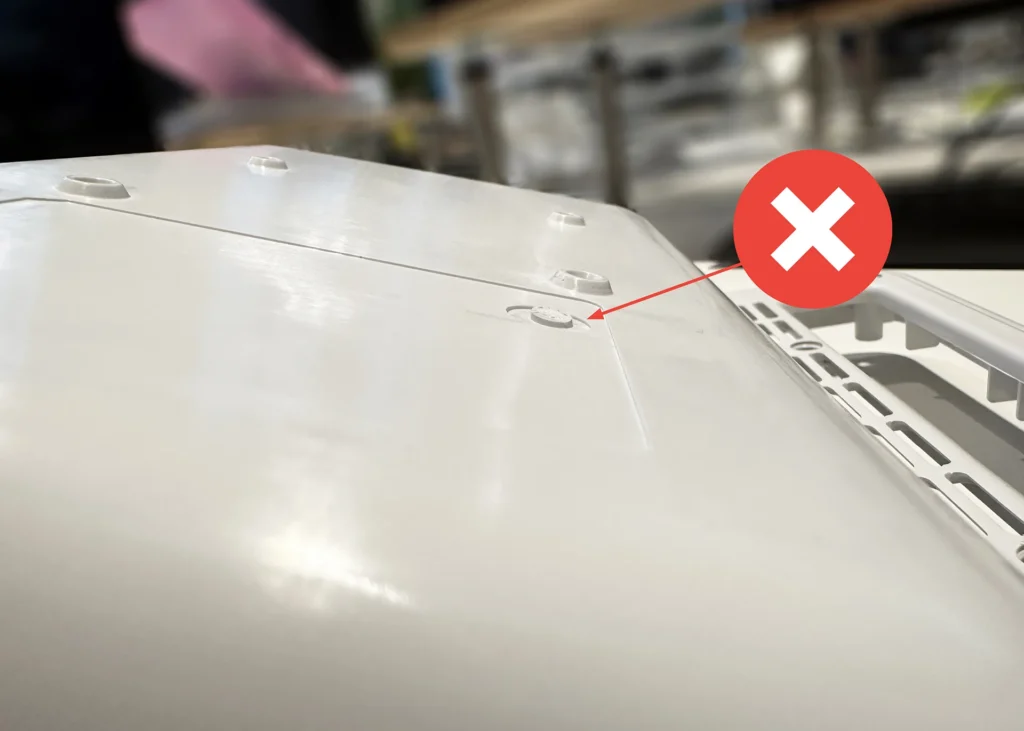
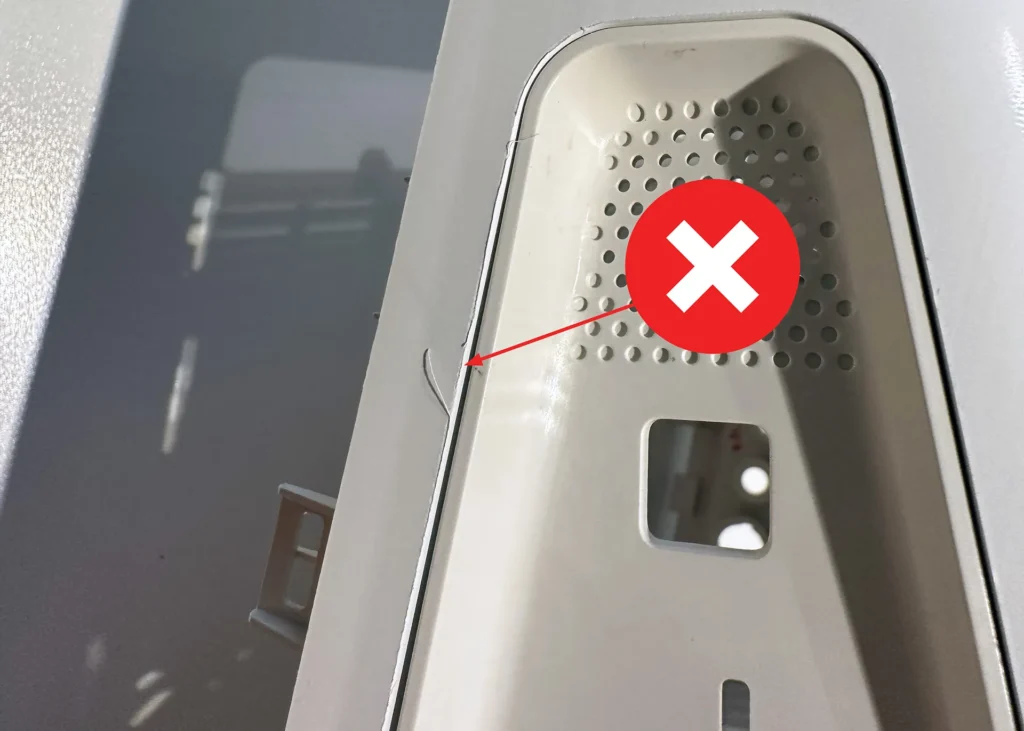
More information
Step by step we assist our clients towards the product of their dreams, interested to start your journey with us? Contact us by phone, our online form or send an e-mail to: